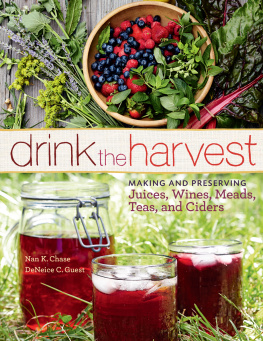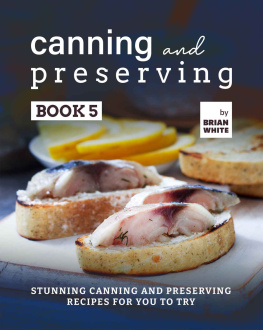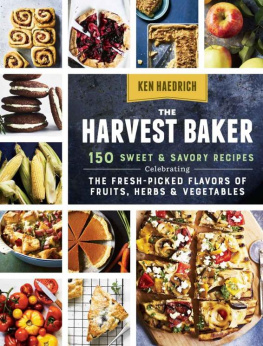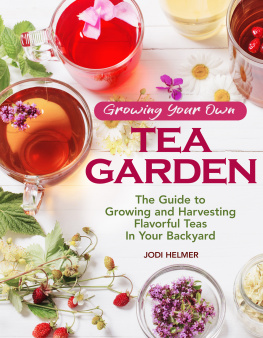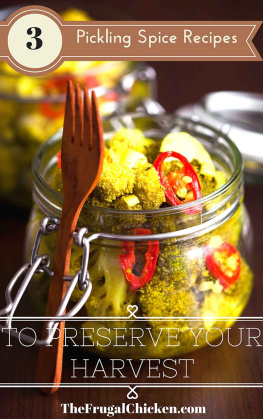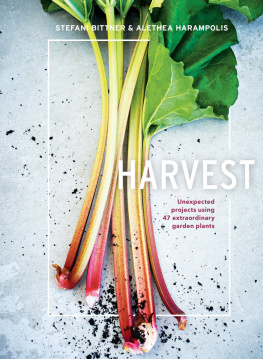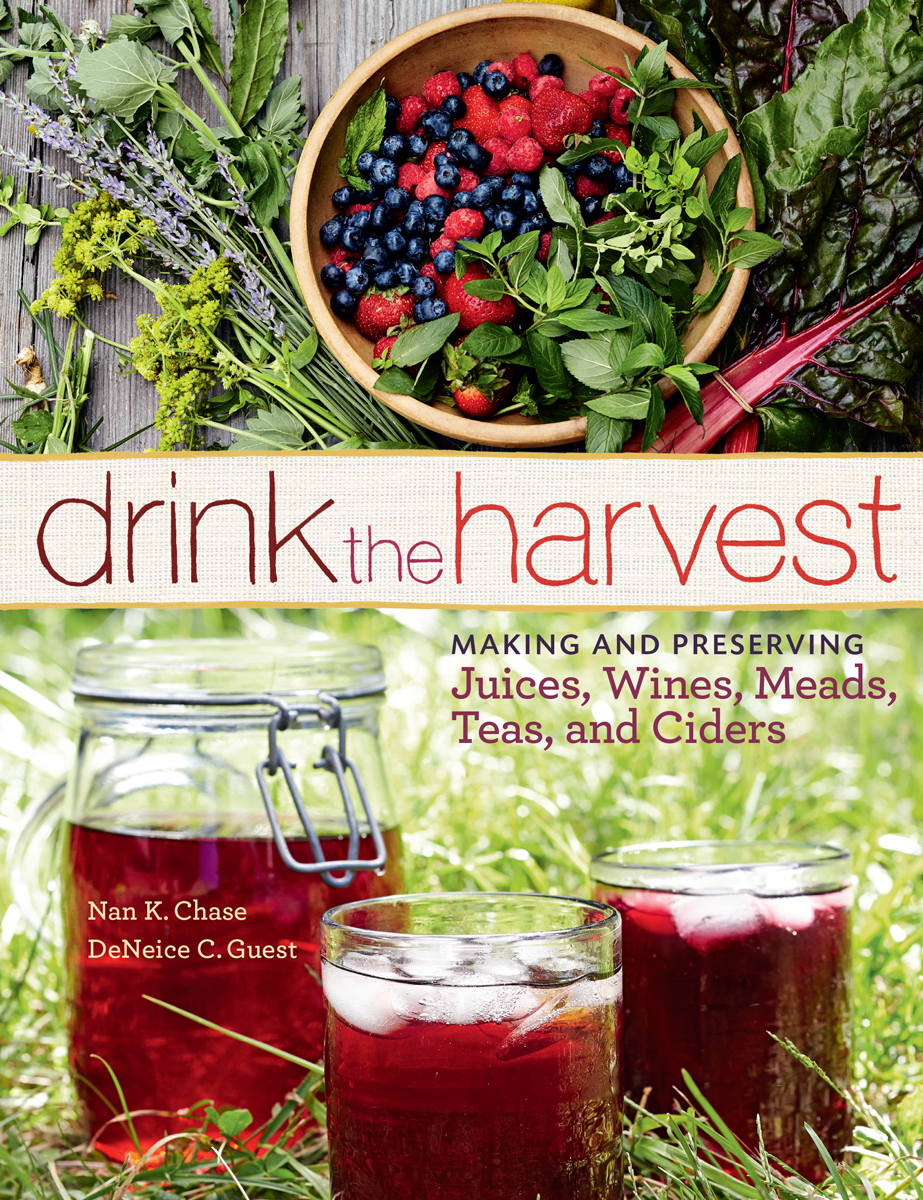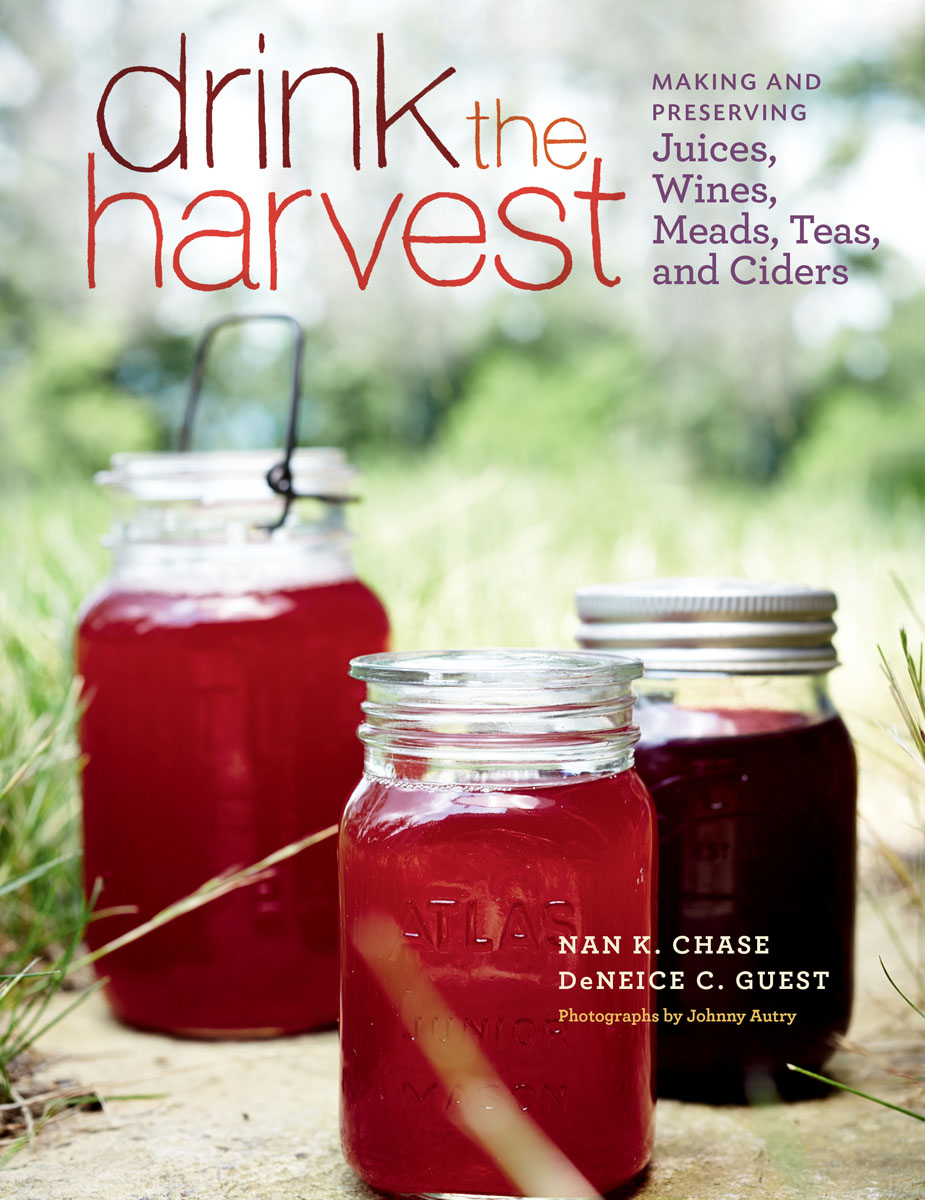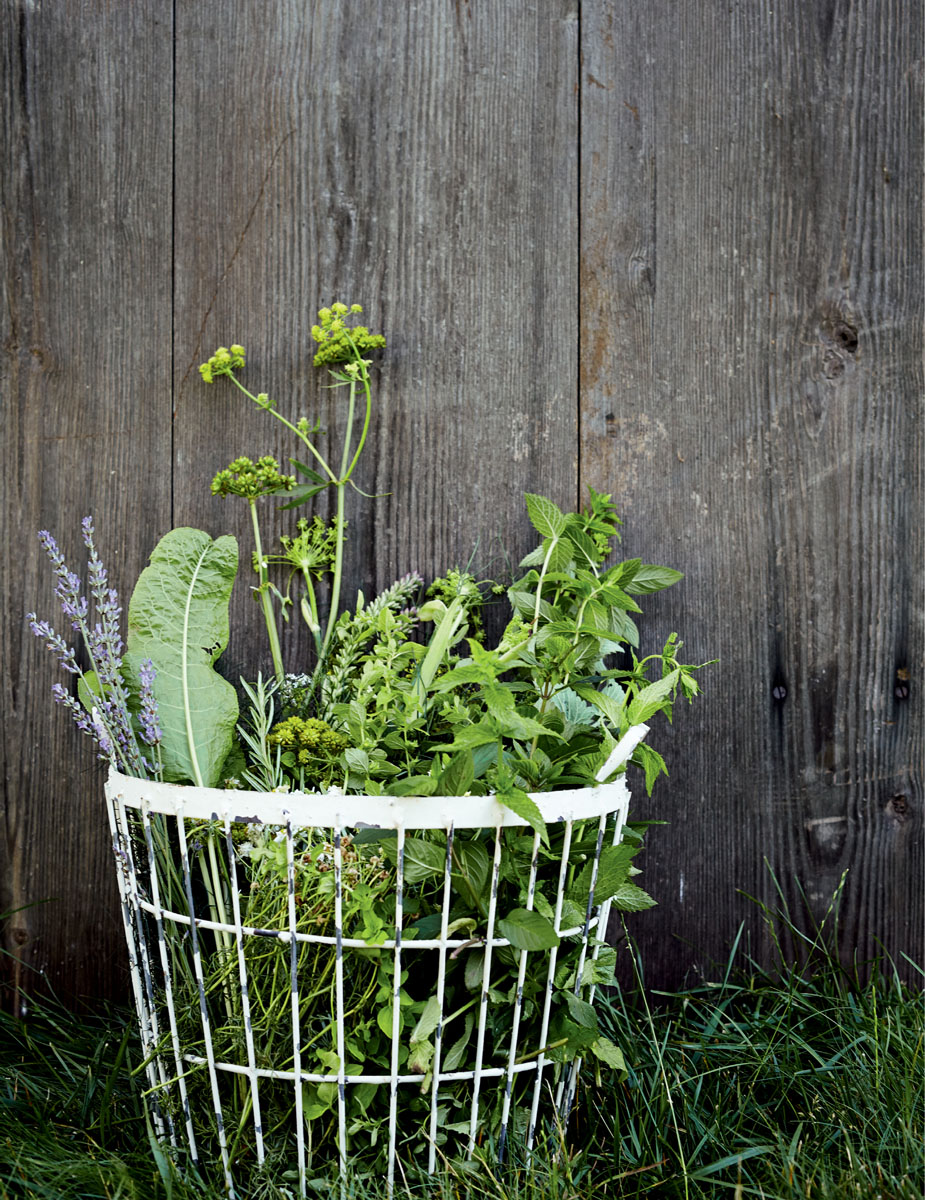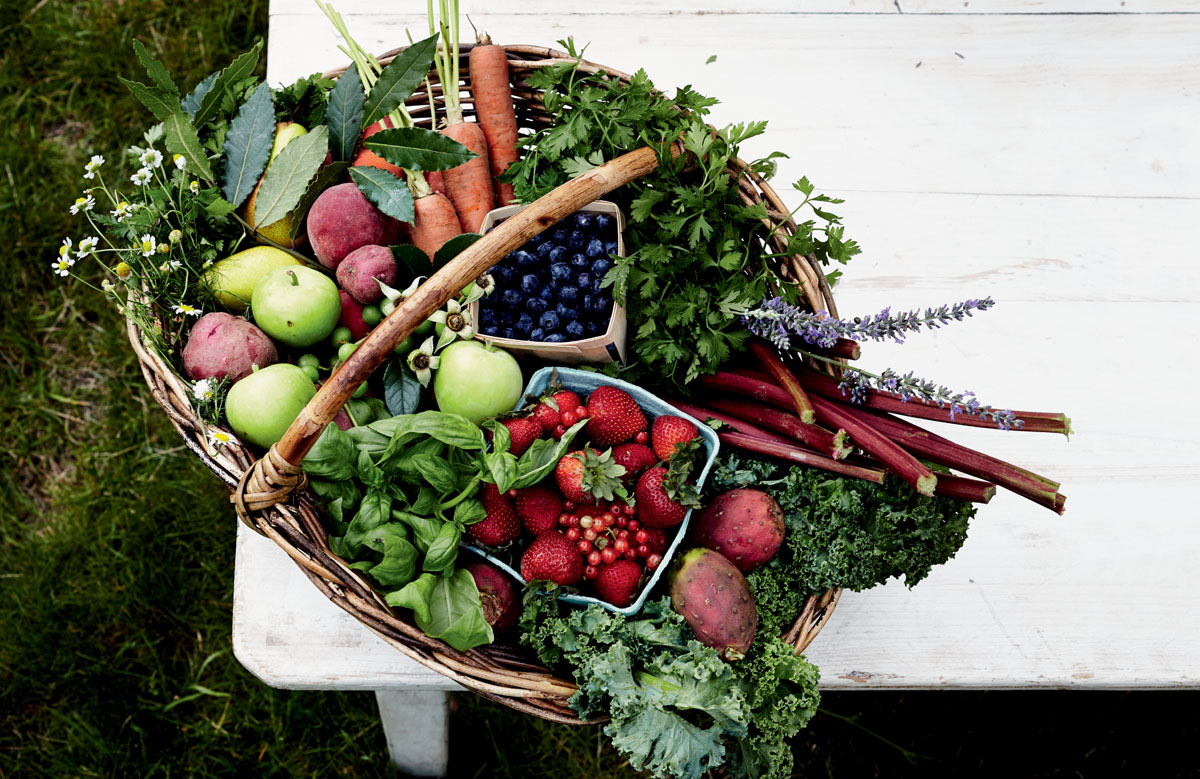We dedicate this book to the inspired professionals at the Cooperative Extension System of the United States Department of Agriculture, who have been teaching gardeners and cooks for generations.
We gratefully acknowledge all the older gardeners we have met through the years, for the wisdom they so eagerly share. We also appreciate the younger gardeners in our lives who bring freshness and energy into any garden. And we acknowledge our many good friends in the Asheville E-Z Gardeners, a club thats made it E-Z to try new things.
Contents
Introduction
Welcome to the wonderful world of homegrown beverages. Beyond the edible landscape lies the drinkable landscape, where any fruit, any vine or berry, any herb or flower blossom may be the stuff of juice, wine, syrup, or tea. Thats where we live, where we garden, cook, and imbibe. We love sharing good times with our families and our friends, at get-togethers that are enlivened with delicious beverages from our gardens. We share a passion for putting up fruit and vegetable juices in all forms and using them in cocktails, for marinades and seasonings, in soups and salads, all sorts of places.
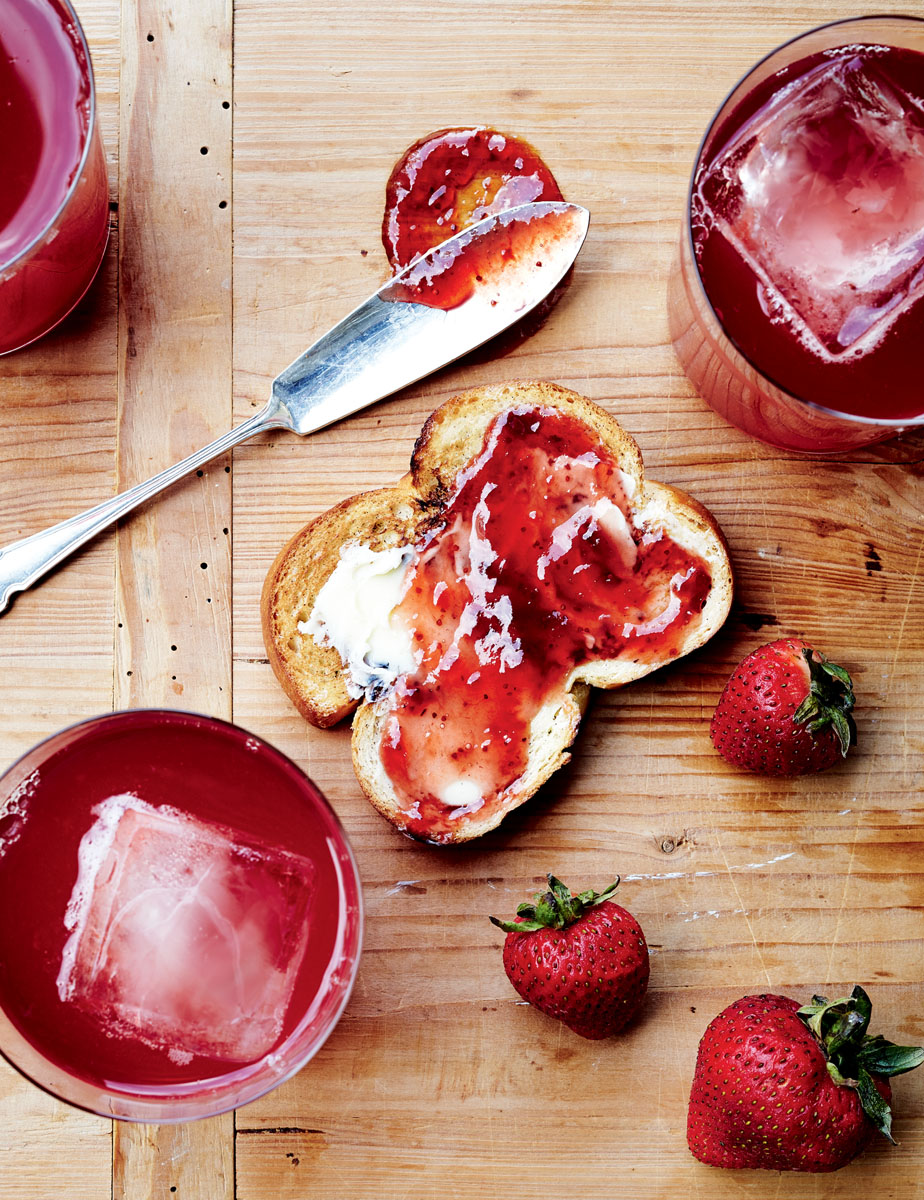
As part of the explosive national movement to plant and harvest food ever closer to home, we noticed that it was almost too successful! People everywhere were planting bigger and more diverse gardens, and pretty soon many gardeners were swamped with quickly ripening produce from vegetable gardens, berry patches, and orchards, not to mention the bounty from farmers markets. What to do with it all? We agreed that someone should be talking about how fun and rewarding it is to maximize garden harvest by processing beverages, not to mention how economical.
This book is not just for experienced gardeners and expert cooks. It is for everyone who loves good food and drink, appreciates economy, embraces creativity, and wants new ideas for a memorable garden and an inviting table. This book is for:
Parents who want to limit their childrens consumption of empty calories from high-fructose corn syrup while providing nutrition and encouraging an interest in good food.
Gourmet cooks looking for unique offerings for friends and guests. (Simply uncork a bottle of prickly pear cactus wine to create a sensation.)
Urban homesteaders motivated to wrest more of their diet, solid and liquid, from the streets around them.
Suburban gardeners trying to bring more utility to their spacious and well-tended yards.
Farm families with the know-how to process bulk foods and enough land to plant additional high-production crops.
Conscious eaters who insist on pure, safe foods that are free of pesticides and genetically modified organisms (GMOs) and who like to prepare their own meals from the ingredients up.
Our dream is that after trying some of these recipes and mastering the general principles, you will gain confidence, get creative, and start making up your own recipes based on the contents of your own plot of land. One of our best discoveries during our months of field research was that two of the most flavorful and productive of all the drinkable crops are also great in the home landscape: crab apples and prickly pear cactus.
Cheers!
Part 1
From Garden to Kitchen
1
Finding Beverages in your Garden
Are you ready to take your garden to an amazing level of productivity? Ready to use more of what you grow and fill your larder with joy? Ready to taste fruits and vegetables, herbs and flowers as you never have before? Ready for something new, something unusual in the kitchen?
Then come along and join us as we explore a world of homegrown beverages thats waiting just outside your door, a world of delicious, nutritious drinks to enjoy fresh or to put up by canning or fermenting or freezing so you can savor them all year long.
Well show you how to capture your gardens bounty at its peak and eliminate the waste that sometimes accompanies extra-big crops. Well give you tips on planning and planting your garden with drinkable crops, everything from wildflowers to watermelons, and carrots to crab apples. And well help you extend the harvest season no matter where you live.
As with any other cookbook, this volume is a starting point for your own experimentation. Theres no limit to what you can do with beverages.
the joys of juice (and other drinks )
Imagine starting your day with a breakfast that includes a serving of jewel-colored berry juice. For lunch or an afternoon snack, add a dose of good health with a glass of spiced apple cider. Cocktail hour might feature a Bloody Mary (or nonalcoholic Virgin Mary) made with vegetables from the backyard, or a homemade rice wine flavored with fresh organic citrus. Serve rich honey-toned mead or well-aged grape wine with dinner, then settle in for the evening with a cup of herbal tea.
You can grow all these drinks and many more, plus intriguing flavored syrups to add to other beverages. Most can come from a single garden, once you learn to spot the beverage potential of familiar plants and understand how even a few new plant selections will greatly expand your beverage choices.
Dont worry, though. You dont need a big yard with lots of fruit trees, row upon row of berry bushes or grape vines, dozens of tomato plants, and other summer vegetables. And we know that not everyone has access to endless herbs, rose bushes galore, and unusual specimens like prickly pear cactus and lemons.
Even we dont have all those goodies in our gardens, although we do grow enough of them to have tasted and experimented with them while creating the recipes in this book. Like so many others who love to cook and eat fresh food, we supplement our homegrown produce with bulk quantities from local farmers markets. And like gardeners everywhere, we have gardening friends who like to share their best, most prolific crops while these foods are at the peak of ripeness.
Community-supported agriculture (CSA) shares and pick-your-own farms can also round out the supply side. Its perfectly all right to stock up on picked-this-morning ingredients to use in crafting your own close-to-homegrown beverages. The freshness factor is nearly the same, and so are the flavor and nutrition.
If your growing conditions are not ideal, you can make the best of what you do have. Maybe you can grow a few potted plants; fresh basil and Meyer lemons are well suited for syrups or wine. If you have a small yard with one or two old-yet-productive fruit trees and not much else, thats fine, too. It may well happen that your limited selection of plants will make terrific beverages; plum wine and pear cider are just two examples that might fit the bill. Perhaps your yard is wooded and damp; if so, its perfect for growing wildflowers, such as nettles and bee balm, that make flavorful and beneficial teas.

